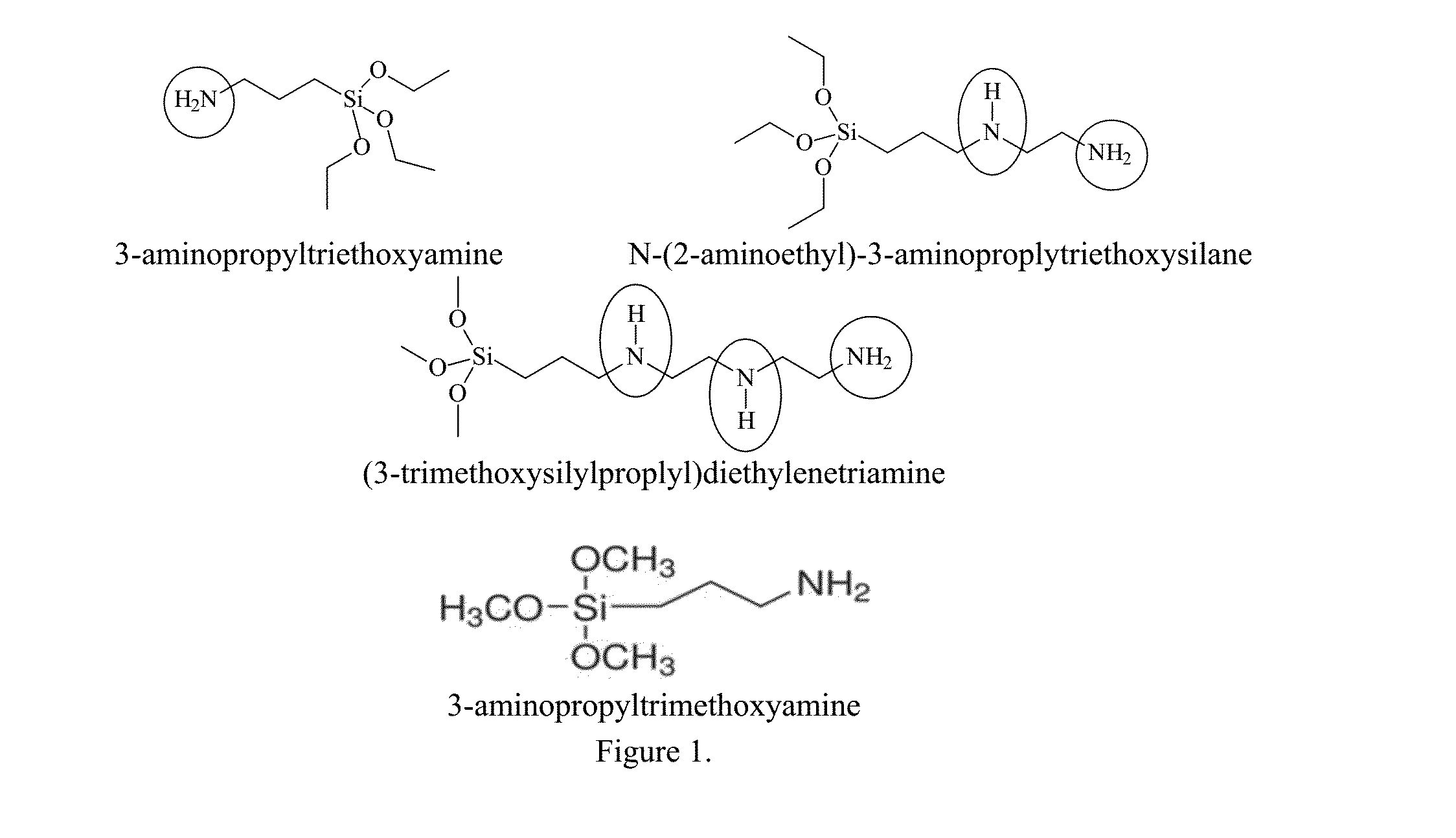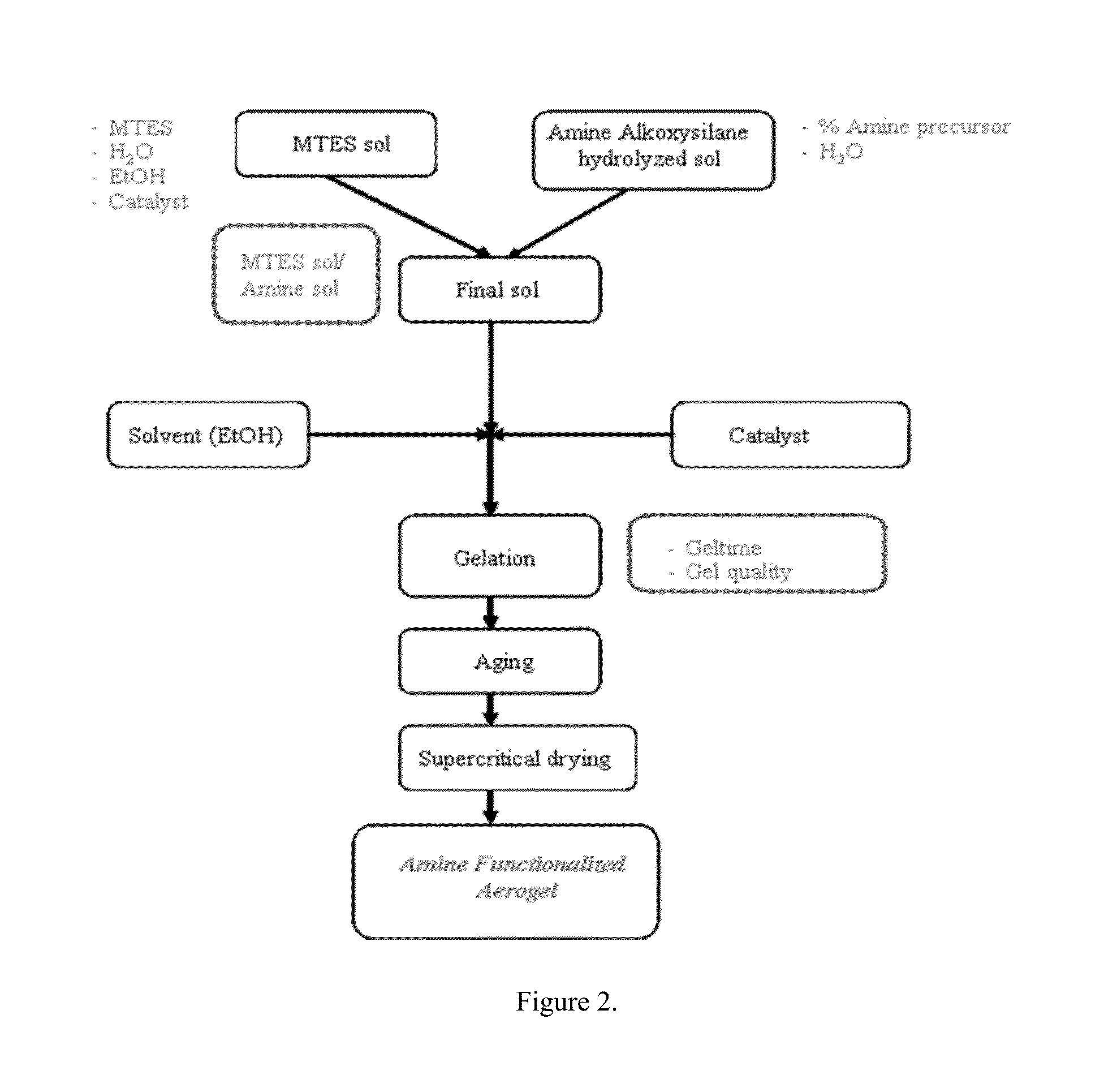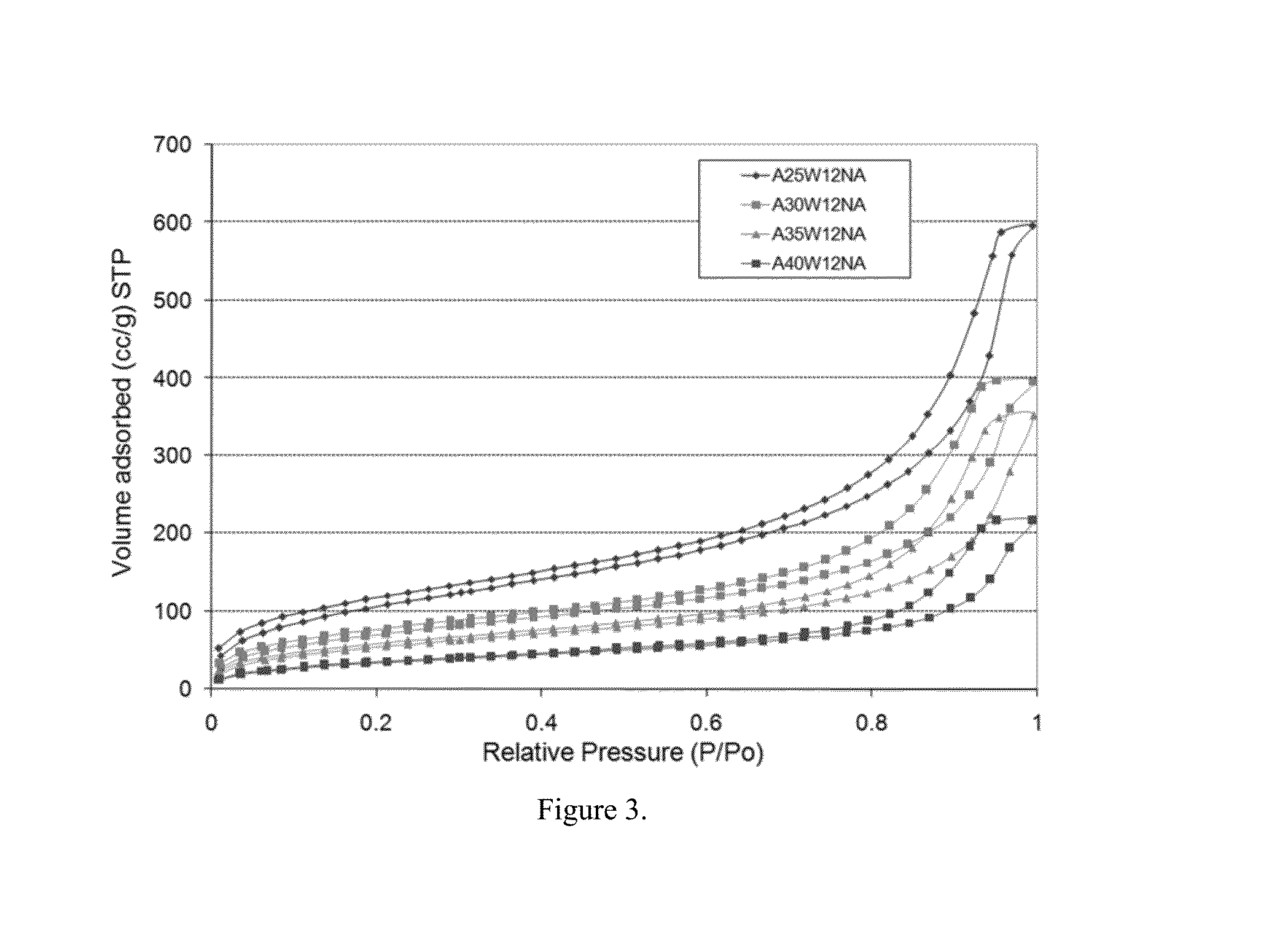Aerogel sorbents
a technology of sorbents and aerogels, which is applied in the field of porous carbon dioxide sorbents, can solve the problems of increasing the pressure to limit the release of carbon dioxide, consuming an excessive amount of energy, and not being able to meet the enormous scale of replacement needs
- Summary
- Abstract
- Description
- Claims
- Application Information
AI Technical Summary
Benefits of technology
Problems solved by technology
Method used
Image
Examples
example 1
Preparation of Sorbent CQ (WD-24C, Target Density: 0.065 g / Cc, 40% APTES, Total H2O / Si=4.4)
[0063]To make a gel with 40 ml volume, first dilute 6.1 ml MTES / TEOS sol prepared in Sol 1 with 28.2 ml ethanol. To this mixture add 5.7 ml APTES sol prepared in Sol 5 while stirring. After stirring for 1 hour, pour the sol into a mold for gelation. Gel time is within two days. CO2 sorption capacity for this sorbent at 40° C. and 0.15 PCO2 is 6.74 lb CO2 / 100 lb sorbent with a fast sorption kinetics of 6.2 minutes to 80% Capacity Equilibrium. Working Capacity of this sample is 4.35 lb CO2 / 100 lb sorbent. Working Capacity is the capacity of the sorbent to adsorb the CO2 in the next capture cycle. This is typically the difference between adsorption and desorption amount sin the immediately preceding cycle.
[0064]CO2 sorption capacity for this sorbent at 55° C. is 7.40 lb CO2 / 100 lb sorbent with a fast sorption kinetics of 4.2 minutes to 80% Capacity Equilibrium.
example 2
Preparation of Sorbent CN (WD-25A, Target Density: 0.05 g / Cc, 30% APTES, Total H2O / Si=8)
[0065]To make a gel with 40 ml volume, first mix 5.5 ml MTES / TEOS sol prepared in Sol 1 with 31.2 ml ethanol while stirring. To this mixture add 3.3 ml APTES sol prepared in Sol 5 and stir for 1 hour. Then pour the sol into a mold for gelation. Gel time is within 2 days.
[0066]CO2 sorption capacity for this sorbent at 55° C. is 7.26 lb CO2 / 100 lb sorbent with a fast sorption kinetics of 5 minutes to 80% Capacity Equilibrium.
example 3
Preparation of Sorbent CR (WD-26C, Target Density: 0.065 g / Cc, 40% APTES, Total H2O / Si=4.4)
[0067]To make a gel with 40 ml volume, first dilute 6.1 ml MTES sol prepared in Sol 2 with 28.2 ml ethanol. To this mixture add 5.7 ml APTES sol prepared in Sol 5 while stirring. After stirring for 1 hour, pour the sol into a mold for gelation. Gel time is within four days.
[0068]CO2 sorption capacity for this sorbent at 55° C. is 5.49 lb CO2 / 100 lb sorbent with a fast sorption kinetics of 5 minutes to 80% Capacity Equilibrium.
PUM
| Property | Measurement | Unit |
|---|---|---|
| density | aaaaa | aaaaa |
| density | aaaaa | aaaaa |
| temperatures | aaaaa | aaaaa |
Abstract
Description
Claims
Application Information
 Login to View More
Login to View More - R&D
- Intellectual Property
- Life Sciences
- Materials
- Tech Scout
- Unparalleled Data Quality
- Higher Quality Content
- 60% Fewer Hallucinations
Browse by: Latest US Patents, China's latest patents, Technical Efficacy Thesaurus, Application Domain, Technology Topic, Popular Technical Reports.
© 2025 PatSnap. All rights reserved.Legal|Privacy policy|Modern Slavery Act Transparency Statement|Sitemap|About US| Contact US: help@patsnap.com



